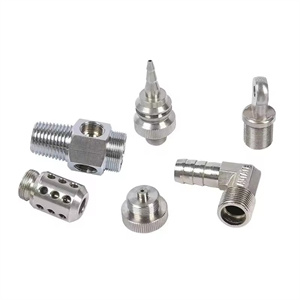There are significant differences between CNC Turning and casting in terms of manufacturing process, material processing, accuracy, cost, and application scenarios.
Manufacturing process: CNC Turning is a material reduction manufacturing method that removes excess material from the workpiece by rotating cutting tools to obtain the desired geometric shape. The entire process is automated by computer numerical control (CNC) machine tools. Casting, on the other hand, is the process of manufacturing parts by melting and remelting liquid metal. Casting is a metal formed object obtained by various casting methods, which involves injecting molten metal into a pre prepared mold, cooling it, and then polishing it to obtain an object with a certain shape, size, and performance.
Material processing: CNC Turning is usually suitable for processing materials such as metals and plastics, by removing excess material through cutting to form parts. Castings can use a wider range of materials, including metals, minerals, chemical raw materials, etc., and some special alloy materials can be manufactured through casting.
Precision: CNC Turning has the characteristic of high-precision machining, which can manufacture high-precision parts with strict tolerances. The accuracy of castings is relatively low, and their surface quality may not be ideal, requiring further processing to meet the required accuracy requirements.
Cost: The cost of CNC Turning is relatively high because it requires high-precision machine tools and cutting tools, as well as professional operators and maintenance personnel. However, due to the ability of CNC Turning to achieve automated production, unit costs can be reduced in large-scale production. The cost of castings is relatively low because the casting process is relatively simple, does not require high-precision machine tools and cutting tools, and can use a wider range of materials.
Processing principle:
CNC turning: By rotating the workpiece and using a tool to cut along the axis of the workpiece, material is removed to obtain the desired shape and size.
Casting: Pouring liquid metal into a mold and allowing it to cool and solidify to obtain castings with a certain shape, size, and properties.
Applicable parts:
CNC turning: suitable for machining rotating parts such as shafts, discs, sleeves, etc., with high dimensional accuracy and surface quality.
For example, shaft parts of automotive engines.
Casting: commonly used to manufacture parts with complex shapes, internal structures, and difficult to manufacture through other processing methods, such as engine cylinder blocks, casings, etc.
Accuracy and surface quality:
CNC turning: capable of achieving high precision and good surface roughness.
Casting: The accuracy is relatively low and the surface is rough, usually requiring subsequent processing to improve accuracy and surface quality.
Production efficiency:
CNC turning: It is more flexible for single piece or small batch production, but may not be as efficient as casting for large batch production.
Casting: suitable for mass production with high production efficiency.
